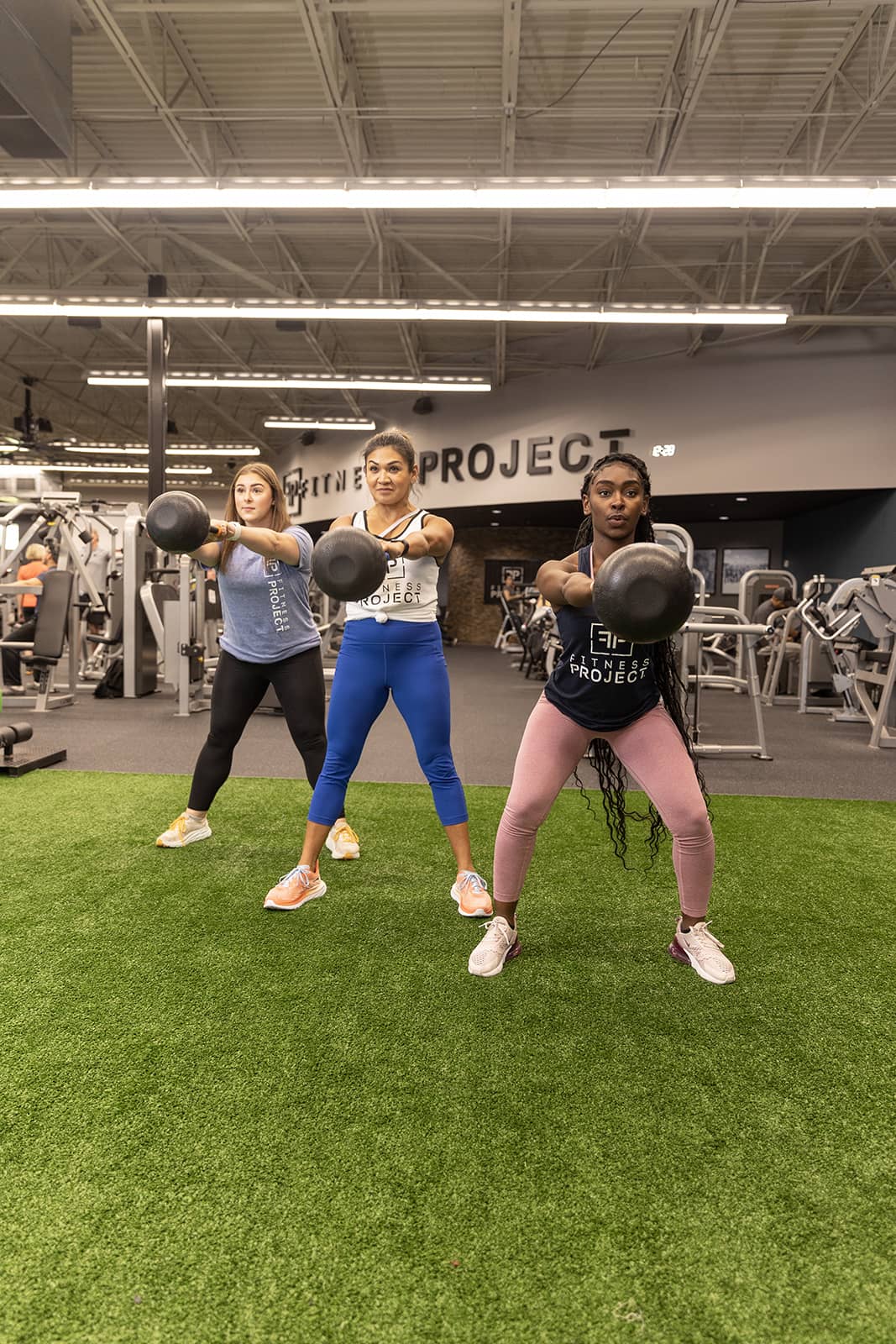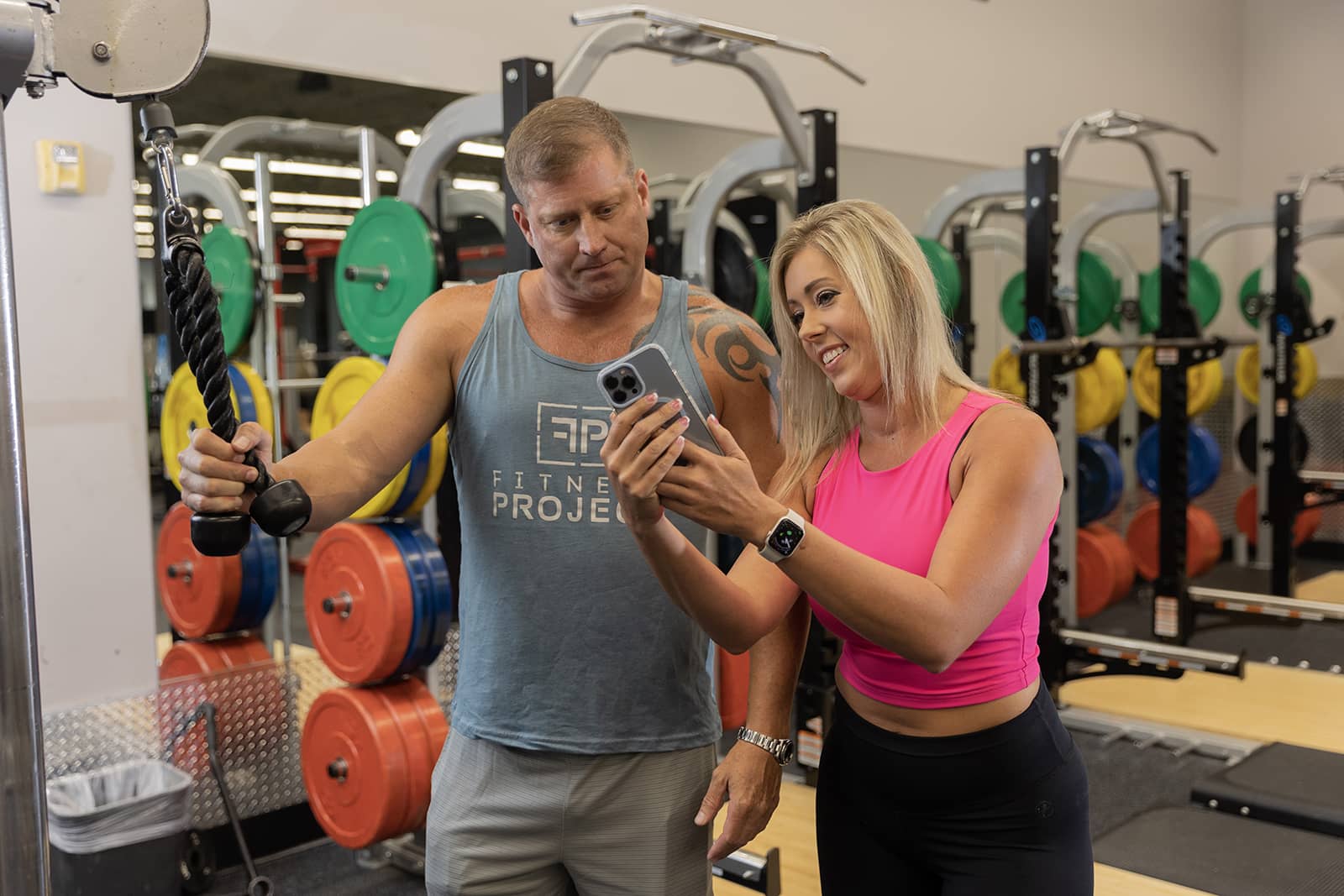If you’ve mastered the basics of fitness and are hungry for a more challenging workout regimen, you’re in the right place. These advanced workout tips are designed to push your limits, enhance your strength, and unlock your full athletic potential.
Get ready to elevate your fitness game and achieve peak performance.

Goal Setting
Before diving into the workouts, define your goals. Whether building muscle, improving endurance, or enhancing overall athleticism, having clear objectives will guide your training. Consider working with a personal trainer. They provide personalized guidance and bring heightened expertise, incorporating cutting-edge techniques, specialized knowledge, and a nuanced understanding of your needs.
Periodization
Structure your workouts to prevent plateaus and overtraining. Periodization is a strategic approach to training that involves dividing a fitness program into distinct phases, each with specific goals and intensities. This structured method recognizes the body’s ability to adapt and aims to optimize performance over time. Typically, a periodized program includes phases such as hypertrophy, strength, power, and active recovery. By systematically manipulating variables such as volume, intensity, and rest periods, athletes and fitness enthusiasts can stimulate continuous adaptations, ensuring a progressive and sustainable improvement in strength, endurance, and athleticism.
PLAN YOUR WEEK’S ADVANCED WORKOUT PROGRAM
Avoid randomly selecting your workouts as you go. An advanced workout plan incorporating Studio Fitness Classes can provide a well-rounded and challenging routine. Before starting any new fitness program, it’s crucial to consult with a healthcare professional or a fitness expert to ensure it’s suitable for your individual needs. Here’s a sample advanced workout plan:
Day 1: Strength Training
Morning: Studio Fitness Class – FP FIFTY or High-Intensity Interval Training (HIIT)
- Focus on full-body movements, incorporating weights and bodyweight exercises.
- Duration: 60 minutes
Afternoon: Strength Training Session
- Compound movements such as squats, deadlifts, and bench presses.
- 4 sets of 6-8 reps for each exercise.
Evening: Yoga or Mobility Class
- Enhance flexibility and promote recovery.
- Duration: 45 minutes
Day 2: Cardiovascular Endurance
Morning: Running or Studio Cycling Class
- Intervals of high and low intensity for cardiovascular fitness.
- Duration: 45 minutes
Afternoon: Bodyweight Circuit Training
- Burpees, mountain climbers, jump squats, etc.
- 5 rounds with minimal rest.
Evening: Pilates or Barre Class
- Focus on core strength and stability.
- Duration: 60 minutes

Day 3: Active Recovery
Morning: Studio Recovery, Swimming, or Yoga
- Low-impact activity to promote recovery.
- Duration: 45 minutes
Afternoon: Light Mobility Exercises
- Foam rolling, dynamic stretching.
- Duration: 30 minutes
Day 4: Power and Agility
Morning: GROUP Fitness Class – Zumba, Dance Cardio or Boxing
- Improve coordination, agility, and cardiovascular health.
- Duration: 60 minutes
Afternoon: Powerlifting or Olympic Lifting
- Explosive movements like power cleans and snatches.
- 4 sets of 4-6 reps for each exercise.
Evening: Flexibility and Balance Class
- Yoga or Tai Chi for balance and flexibility.
- Duration: 45 minutes

Day 5: Cross-Training
Morning: Studio Fitness Class – CrossFit or Functional Training
- Varied functional movements at high intensity.
- Duration: 60 minutes
Afternoon: Outdoor Activities
- Hiking, rock climbing, or any other recreational activity.
- Duration: 90 minutes
Day 6: Rest or Active Recovery
Choose an activity you enjoy at a low-intensity
- Walking, gentle cycling, or yoga.
- Duration: 30-45 minutes
Day 7: Flexibility and Mind-Body Connection
Morning: GROUP Fitness Class – Mindful Movement
- BodyBalance, yoga, or any class emphasizing mind-body connection.
- Duration: 60 minutes
Afternoon: Stretching Routine
- Focus on improving flexibility in major muscle groups.
- Duration: 30 minutes
Remember to listen to your body, stay hydrated, and adjust the intensity as needed. Adequate sleep and proper nutrition are also crucial components of any advanced workout plan.
Warm-up
Never underestimate the importance of a thorough warm-up. Include dynamic stretches, joint mobility exercises, and light cardio to prepare your body for the intense workout ahead.

Progressive Overload & Strength Training
Continuously challenge your muscles by gradually increasing the weight or resistance. This stimulates muscle growth and strength gains. You can also focus on compound exercises. These movements engage multiple muscle groups, promoting overall strength development. Consider our BODYATTACK class. It’s a high-energy fitness class that combines running, lunging, and jumping with strength exercises such as squats and push-ups.
Cardiovascular Conditioning
Incorporate GRIT sessions to improve cardiovascular fitness and burn fat. Our 30-minute high-intensity interval training (HIIT) sports conditioning workout is designed to make you perform like an athlete. This workout often uses a step, bodyweight exercises, and multi-dimensional sports conditioning training to increase your overall athletic performance: strength, agility, speed, and power.
Mobility and Flexibility
Mobility and flexibility training are essential components of a well-rounded fitness regimen, contributing to improved athletic performance and overall health and injury prevention. Mobility training focuses on enhancing the range of motion of joints and the ability to move them freely. This involves exercises that target specific areas of the body, such as the hips, shoulders, and spine, promoting functional and dynamic movements. On the other hand, flexibility training like yoga or Pilates emphasizes the lengthening of muscles to increase suppleness and elasticity—both forms of training work together, with mobility providing the foundation for flexibility.
Recovery Strategies
Recovery strategies play a game-changing role in optimizing physical performance and ensuring long-term well-being. The key pillars of recovery are sleep, nutrition, and active recovery. Quality sleep provides the body with the time needed for repair and regeneration. Aim for 7-9 hours of uninterrupted sleep each night to support hormonal balance and muscle recovery. Nutrition acts as the fuel for recovery, focusing on a balanced diet rich in protein, complex carbohydrates, and essential fats. Post-exercise nutrition, including a combination of protein and carbohydrates, replenishes glycogen stores and kickstarts the muscle repair process.
Additionally, integrating active recovery workouts into your routine enhances blood circulation and helps flush out metabolic byproducts, promoting faster recovery. Remember, the true gains happen not during the workout but in the recovery that follows. Prioritize these strategies, and watch as your body responds with increased performance.

Monitoring and Adjusting
Regularly assess your progress and make necessary adjustments to your workout plan. A FREE 3D Body Scan will identify areas that require you to tweak exercises, increase weights, or modify your training split. When you make a 3D body scan a regular part of your gym routine, you can see how you have improved over time.
Embarking on an advanced workout plan requires dedication, discipline, and a commitment to personal growth. By incorporating these principles into your routine, you’ll challenge your physical limits and unlock a new level of strength and athleticism. Embrace the journey, stay focused, and watch yourself evolve into the best version of yourself.



